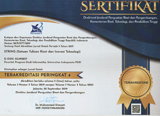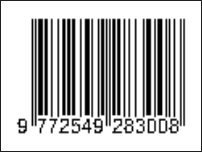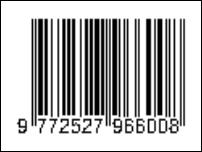Klasifikasi Tingkat Stress pada Mahasiswa Teknik Informatika dalam Melakukan Perkuliahan Metode Hybrid Menggunakan Algoritma Naive Bayes
(1) Universitas Indraprasta PGRi
(*) Corresponding Author
Abstract
The Covid-19 pandemic has forced educational institutions to use hybrid learning methods. This method combines face-to-face and online lectures alternately so that many students become stressed. Stress has many causes. This is what makes researchers interested in conducting research by making predictions of stress levels in students, especially Informatics Engineering students in conducting lectures using the hybrid method. This study will use student profile data which is considered to be a factor causing stress. This study uses the Naive Bayes method. The researcher chose this method because in naive Bayes calculations, the variable data is not only in the form of numbers but can also use words. In addition, the naive Bayes algorithm only requires a small amount of training data to determine the estimated parameters needed in the classification process. This research was conducted by calculating the probability of the training data variable and continued by classifying the testing data. From the evaluation and validation results that have been carried out using the Rapid Miner tools, and from the training data using k-folds cross validation with k = 10, the accuracy results are 73.33%. And after being tested using data testing, the accuracy level results obtained from the classification of stress levels using the Naïve Bayes method obtained results for Accuracy 80.00%, Precision 77.78% and Recall 77.78%.
Keywords
Full Text:
PDFReferences
N. Chatrina, Siregar, R. Ruli, A, Siregar, and M. Yoga, Distra, Sudirman, “Implementasi Metode Naive Bayes Classifier (NBC) Pada Komentar Warga Sekolah Mengenai Pelaksanaan Pembelajaran Jarak Jauh (PJJ),” Jurnal Teknologia, vol. 34, no. 1, pp. 102–110, 2020.
Rumini and A. Nasruddin, “Prediksi Awal Penyakit Diabetes Mellitus Menggunakan Algoritma Naïve Bayes,” J. ICT Inf. Commun. Technol., vol. 20, no. 2, pp. 246–253, 2021, doi: 10.36054/jict-ikmi.v20i2.376.
I. K. Syahputra, F. A. Bachtiar, and S. A. Wicaksono, “Implementasi Data Mining untuk Prediksi Mahasiswa Pengambil Mata Kuliah dengan Algoritme Naive Bayes,” J. Pengemb. Teknol. Inf. dan Ilmu Komput., vol. 2, no. 11, pp. 5902–5910, 2018.
Y. E. Fadrial, “Algoritma Naive Bayes Untuk Mencari Perkiraan Waktu Studi Mahasiswa Naive Bayes Algorithm for Finding Student Estimated Time Students,” J. Inf. Technol. Comput. Sci., vol. 4, no. 1, pp. 20–29, 2021.
E. D. Sikumbang, “Penerapan Data Mining Penjualan Sepatu Menggunakan Metode Algoritma Apriori,” J. Tek. Komput. AMIK BSI, vol. Vol 4, No., no. September, pp. 1–4, 2018.
A. Puspita and M. Wahyudi, “Algoritma C4.5 Berbasis Decision Tree untuk Prediksi Kelahiran Bayi Prematur,” Konf. Nasinal Ilmu Pengetah. dan Teknol., vol. 1, no. 1, pp. 97–102, 2015.
L. W. Kusuma, “Prediksi Kemampuan Lulusan SMK untuk Dapat Bersaing Di Dunia Kerja dengan Menggunakan Naïve Bayes : Studi Kasus SMK Buddhi Tangerang,” vol. 1, pp. 56–63, 2019.
A. Junaidi, N. Dewi, T. Baidawi, S. Agustiani, Y. T. Arifin, and H. T. Sihotang, “Expert System of Syzygium Aqueum Disease Diagnose Using Bayes Method,” J. Phys. Conf. Ser., vol. 1641, no. 1, 2020, doi: 10.1088/1742-6596/1641/1/012097.
A. Suryadi, “Sistem Pendukung Keputusan Seleksi Ujian Masuk Perguruan Tinggi Menggunakan Nbc (Naïve Bayes Classifier),” Kinetik, vol. 1, no. 3, p. 173, 2016, doi: 10.22219/kinetik.v1i3.120.
D. Nofriansyah, K. Erwansyah, and M. Ramadhan, “Penerapan Data Mining dengan Algoritma Naive Bayes Clasifier untuk Mengetahui Minat Beli Pelanggan terhadap Kartu Internet XL ( Studi Kasus di CV. Sumber Utama Telekomunikasi),” J. Saintikom, vol. 15, no. 2, pp. 81–92, 2016.
DOI: http://dx.doi.org/10.30998/string.v8i3.17096
Refbacks
- There are currently no refbacks.
Copyright (c) 2024 Lia Susanti

This work is licensed under a Creative Commons Attribution 4.0 International License.
STRING (Satuan Tulisan Riset dan Inovasi Teknologi) indexed by:

Ciptaan disebarluaskan di bawah Lisensi Creative Commons Atribusi 4.0 Internasional.
View My Stats


 Sertifikat Akreditasi
Sertifikat Akreditasi
















